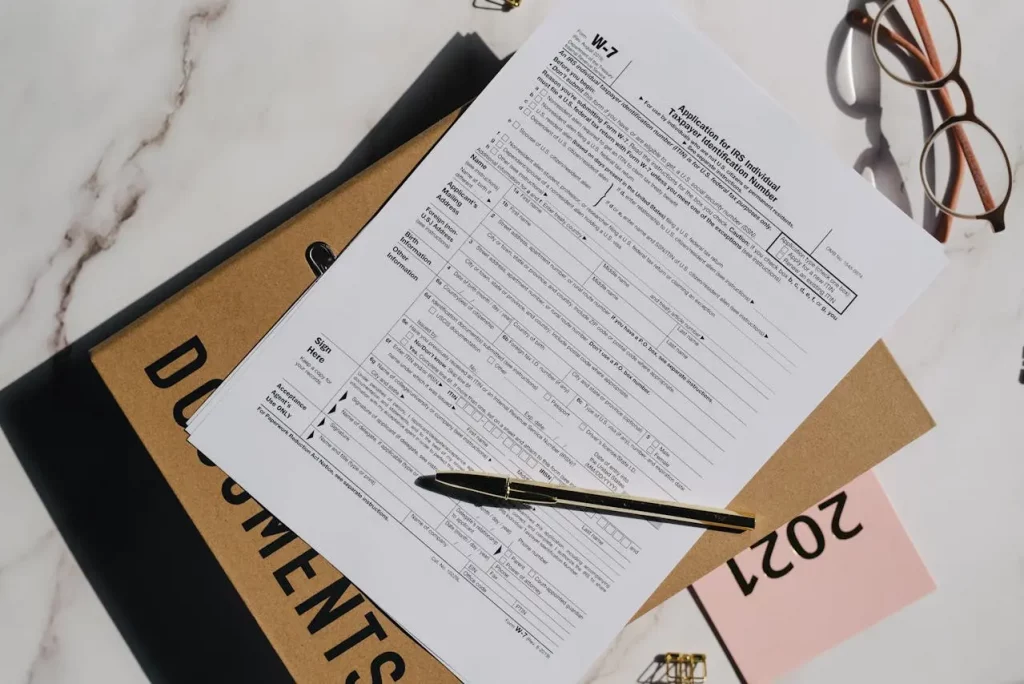IN THIS ISSUE
DID YOU KNOW?
- The Critical Role of Record-Keeping
- Understanding Deductible Expenses
- Employment Tax Obligations
- Sole Proprietorship Tax Requirements
- Quarterly Estimated Tax Payments
- LLC Tax Considerations
- Corporate Tax Obligations
- The Strategic Value of Professional Guidance
- Looking Toward the Future
Child Tax Credit 2025: How to Qualify and Maximize the Credit
by Audrey Jackson
Did You Know?
The Child Tax Credit (CTC) is one of the most significant tax benefits available to families in the United States. Designed to help offset the costs of raising children, this tax credit can provide substantial financial relief for eligible taxpayers. As we look ahead to 2025, understanding the eligibility requirements, changes to the credit, and strategies to maximize its benefits is crucial for families aiming to make the most of this valuable tax credit. In this comprehensive guide, we’ll explore everything you need to know about the Child Tax Credit in 2025, including how to qualify, how much you can claim, and tips to ensure you’re maximizing your tax credit.

1. What is the Child Tax Credit?
The Child Tax Credit is a federal tax credit designed to provide financial support to families with dependent children. Unlike a tax deduction, which reduces your taxable income, a tax credit directly reduces the amount of tax you owe, dollar for dollar. In some cases, the CTC is even refundable, meaning you could receive a refund if the credit exceeds your tax liability.
For 2025, the Child Tax Credit is expected to continue playing a vital role in helping families manage the costs of raising children, such as education, healthcare, and childcare. However, the specific details of the credit, including its amount and eligibility criteria, may be subject to changes based on legislative updates. Staying informed about these changes is key to maximizing your tax credit.
2. Key Changes to the Child Tax Credit in 2025
While the exact details of the Child Tax Credit for 2025 may not be fully finalized until closer to the tax year, there are a few trends and potential changes to keep an eye on:
Credit Amount: The maximum credit amount per qualifying child could see adjustments based on inflation or legislative changes. For reference, in recent years, the credit has been up to $2,000 per child, with a portion of it being refundable.
Age Limits: The age limit for qualifying children may remain at 17 years old, but there could be discussions about extending this limit to provide support for older dependents.
Income Thresholds: The income thresholds for phasing out the credit may be adjusted to account for inflation, potentially allowing more families to qualify.
Refundability: The refundable portion of the credit (known as the Additional Child Tax Credit) could see changes, impacting how much of the credit can be received as a refund if it exceeds your tax liability.
Staying updated on these potential changes will help you plan ahead and ensure you’re taking full advantage of the Child Tax Credit in 2025.
3. Who Qualifies for the Child Tax Credit in 2025?
To claim the Child Tax Credit in 2025, you’ll need to meet specific eligibility requirements. Here’s a breakdown of the key criteria:
Qualifying Child Requirements
Age: The child must be under the age of 17 at the end of the tax year (December 31, 2025).
Relationship: The child must be your son, daughter, stepchild, foster child, brother, sister, stepbrother, stepsister, or a descendant of any of these individuals (e.g., grandchild).
Support: The child must not have provided more than half of their own financial support during the year.
Dependent: The child must be claimed as a dependent on your tax return.
Citizenship: The child must be a U.S. citizen, U.S. national, or U.S. resident alien.
Residency: The child must have lived with you for more than half of the tax year.
Taxpayer Requirements
Income Limits: Your modified adjusted gross income (MAGI) must fall below certain thresholds to claim the full credit. For 2025, these thresholds are expected to be similar to previous years, with phase-outs beginning at 200,000forsinglefilersand200,000forsinglefilersand400,000 for married couples filing jointly.
Filing Status: You must file as single, head of household, married filing jointly, or qualifying widow(er) to claim the credit.
By ensuring you meet these requirements, you can confidently claim the Child Tax Credit on your 2025 tax return.
4. How Much is the Child Tax Credit Worth in 2025?
The amount of the Child Tax Credit you can claim depends on several factors, including your income, the number of qualifying children, and any changes to the credit for 2025. Here’s what you need to know:
Maximum Credit: The maximum credit per qualifying child is expected to remain at 2,000,withupto2,000,withupto1,600 being refundable (subject to legislative changes).
Phase-Outs: The credit begins to phase out for taxpayers with MAGI above 200,000(singlefilers)or200,000(singlefilers)or400,000 (married filing jointly). For every 1,000ofincomeabovethesethresholds,thecreditisreducedby1,000ofincomeabovethesethresholds,thecreditisreducedby50.
Multiple Children: If you have more than one qualifying child, you can claim the credit for each child, potentially adding up to significant tax savings.
For example, a married couple with three qualifying children and a MAGI of 350,000couldclaimupto350,000couldclaimupto6,000 in Child Tax Credits ($2,000 per child), assuming they meet all eligibility requirements.
5. How to Claim the Child Tax Credit
Claiming the Child Tax Credit is a straightforward process, but it requires careful attention to detail. Here’s how to do it:
Gather Documentation: Collect all necessary documents, including Social Security numbers for your children, proof of residency, and income statements.
Complete Form 1040: When filing your federal tax return, complete Form 1040 or 1040-SR.
Attach Schedule 8812: If you’re claiming the refundable portion of the credit (Additional Child Tax Credit), you’ll need to complete and attach Schedule 8812 to your return.
Double-Check Information: Ensure all information is accurate, including your children’s details and your income figures, to avoid delays or errors.
By following these steps, you can successfully claim the Child Tax Credit and maximize your tax savings.
6. Tips to Maximize Your Child Tax Credit
To make the most of the Child Tax Credit in 2025, consider these strategies:
Stay Informed: Keep up with any legislative changes or updates to the credit that could impact your eligibility or the amount you can claim.
Adjust Withholding: If you expect to claim the credit, consider adjusting your tax withholding to increase your take-home pay throughout the year.
Plan for Refundability: If you’re eligible for the refundable portion of the credit, plan how you’ll use the refund to support your family’s financial goals.
Claim Other Credits: Explore other tax credits, such as the Earned Income Tax Credit (EITC) or the Child and Dependent Care Credit, to further reduce your tax liability.
By taking a proactive approach, you can ensure you’re maximizing the benefits of the Child Tax Credit.
7. Common Mistakes to Avoid
When claiming the Child Tax Credit, it’s important to avoid common pitfalls that could delay your refund or result in errors. Here are some mistakes to watch out for:
Incorrect Social Security Numbers: Ensure your child’s Social Security number is entered correctly on your tax return.
Filing Status Errors: Choose the correct filing status to avoid issues with your credit amount.
Overlooking Eligibility: Double-check that your child meets all eligibility requirements before claiming the credit.
Missing Deadlines: File your tax return on time to avoid penalties and ensure you receive your credit promptly.
By being mindful of these mistakes, you can streamline the process and avoid unnecessary complications.
8. The Impact of the Child Tax Credit on Your Finances
The Child Tax Credit can have a significant impact on your family’s finances, providing much-needed relief for expenses like childcare, education, and healthcare. For many families, the credit can mean the difference between owing taxes and receiving a refund. By understanding how the credit works and planning accordingly, you can make the most of this valuable tax benefit.
9. Looking Ahead: The Future of the Child Tax Credit
As we move closer to 2025, it’s important to stay informed about potential changes to the Child Tax Credit. Advocacy groups and lawmakers continue to push for expansions to the credit, such as increasing the refundable amount, lowering income thresholds, or extending the age limit for qualifying children. By staying engaged and informed, you can advocate for policies that benefit your family and ensure you’re prepared for any changes.
Conclusion
The Child Tax Credit is a powerful tool for families, providing financial support and reducing the burden of raising children. As we approach 2025, understanding the eligibility requirements, potential changes, and strategies to maximize the credit is essential for making the most of this tax benefit. By staying informed, gathering the necessary documentation, and avoiding common mistakes, you can confidently claim the Child Tax Credit and secure valuable savings for your family. Whether you’re a first-time parent or a seasoned taxpayer, the Child Tax Credit is a resource worth leveraging to support your family’s financial well-being.

